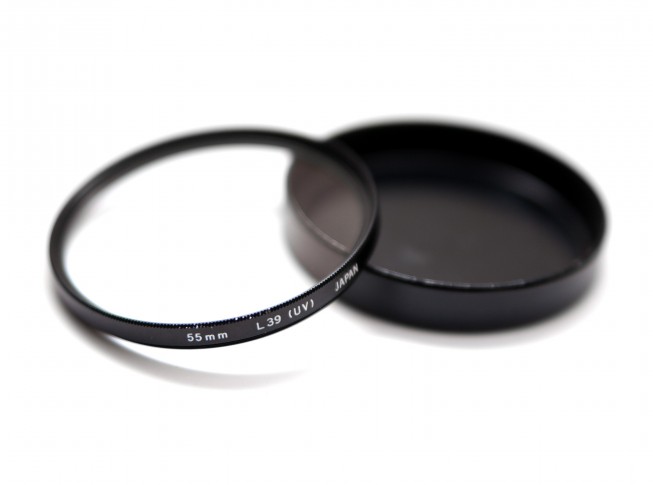Protect Your Lens!

The article is over 5 years old. The information in it may be outdated.
![]()
We are working on its update. In the meantime, you can read some more recent articles.
The lens is the part of your camera that you need to protect against scratches, impacts, dirt, and more. You can protect your lens using a lens hood and a UV filter. Choosing a lens hood is simple, but what about the UV filter? Which brands are good, and what do the more expensive UV filters offer, when they’re “just a piece of glass?”
UV Filter
UV filters are among the most-used filters. These filters’ original purpose was to protect lenses from harmful UV radiation. However, they’re mostly used today for protections from dirt and scratches. You might say that a UV filter is a necessary piece of gear for any photographer who takes their equipment seriously and doesn’t want to see it damaged.
Everything Has a Downside
Everything has its downside, including UV filters. They bring unwanted side effects such as vignetting, imprecise focusing, and reduced detail.
The vignetting is caused by the filter’s thickness. If a UV filter (or any filter for that matter) is very thick, its opaque edge can get in the way of light entering the lens, darkening the corners of photos. Thus you should use the thinnest filters that you can. Cokin’s Harmony series of filters is among the thinnest. The focus and detail problems happen because less light is reaching the filter. This makes objects less contrasted for the camera, and so the lens has trouble with focusing, and with rendering details. A UV filter is something that in an ideal world actually wouldn’t be placed over the lens at all. So when choosing a filter, look at light transmission as one of the main indicators of
A UV filter is something that in an ideal world actually wouldn’t be placed over the lens at all. So when choosing a filter, look at light transmission as one of the main indicators of the its quality. Market leaders like BW, Hoya, and Cokin earned their position through their nearly-100% light transmission. When you are using a low-quality UV filter, you can run into the problems mentioned above. A low-quality UV filter protects your lens just as much as a more expensive one, but keep in mind that it significantly reduces your lens’s effective quality. It’s not good to cover a top-of-the-line lens with a low-quality UV filter. You can end up making it perform like a lower-class lens.

Lens Hoods
Lens hoods are designed to prevent lens flare. Lens flare comes from strong light sources—typically the Sun. But lens hoods also protect lenses from banging up against walls and other obstacles when you’ve hung your camera over your shoulder. They often even help to soften falls. So whenever you take your camera out of the bag, put on a lens hood even if the sun isn’t shining. As a bonus, it will make you look like a professional, even if you aren’t.
Keep It Clean
Always keep your UV filters as clean as you can. Keep in mind that your lens would be happier if they weren’t there at all. When they’re there and they’re dirty, they are even worse than usual for your lens’s performance. That’s why a microfiber cloth should always be among your accessories. Using your shirt for wiping is unacceptable.
UV: Great With Used Cameras Too
If you’re buying or selling photographic equipment second-hand, always keep the words “UV filter with purchase” in mind. If you’re selling, it lets the buyer know that the front lens doesn’t have scratches or other defects. If you’re buying… then that buyer is you.
As we wrote in the beginning, a UV filter is obligatory for every photographer who takes their equipment seriously and doesn’t want it to get scratched from a moment’s inattention. Choose a UV filter whose quality reflects your lens’s quality. And lean towards a risk of too much quality rather than too little. In the end, you’ll be rewarded many times over.



TerryB
A UV filter wasn’t to protect the LENS from harmful UV radiation but to counter a film’s extra sensitivity to UV radiation such that in colour transparencies, for example, distant scenic subjects would exhibit a bluish tint at high altitude and with b/w film a thin veil of fog. Digital sensors don’t, strictly, require UV radiation to be filtered as they do the job without the filter. Thus the word “protector” has come into vogue in better describing their main function with digital cameras today. This is my understanding.
There is one point that you don’t raise, and from personal experience I can say is something that should be considered when deciding which UV (Protector) filter to purchase.
In 2005, I purchased the Sony R1 and which was equipped with a superb Zeiss lens. The filter size is 67mm, so filters tend to be somewhat expensive from the top brands. So I thought I’d economise and bought a cheap one. When I was playing with the camera I was sitting at one end of my lounge and pointing the camera towards the far window to photograph some trees outside. I was very surprised to see a large degree of circular flare in the centre of the viewfinder. I took the filter off and it disappeared.
It turned out the cheap shop-branded filter was not coated and the flare was caused by the rear of the filter reflecting the light hitting the front element of the lens back into the lens. I went back to the shop and returned the filter at the same time as ordering a B+W coated filter at over 4 1/2 times the price. But this worked, and didn’t cause any flare. Properly coated filters do work and are worth the extra.
Zoner
Thank you for your comment, Terry, it is very informative.
TonyW
Another important feature of the UV filter is to protect the lens thread from impact. Once the lens thread is damaged, it is very costly to repair. But a UV filter is cheaper to replace,